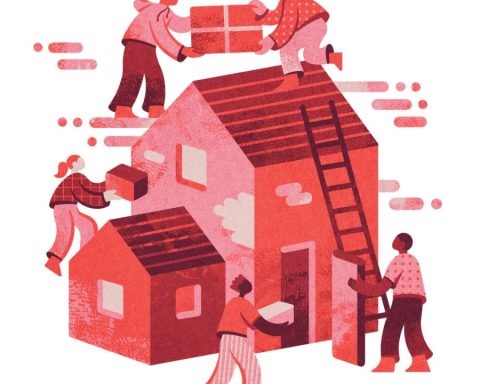Housing co-operatives are not a new concept. They have existed in Canada for decades, offering homes that are often much more affordable than market rentals. Not only do they offer lower rents, but residents have a say in how their community is run, creating a strong sense of ownership and collaboration.
And yet, non-market housing – including co-ops, non-profit apartments and any type of housing that is not privately owned – account for just 5% of all homes in Canada.
Creating more rental co-ops would support Canada’s demand for rent-geared-to-income housing. A report from the Co-operative Housing Federation of Canada, which analyzed rent trends in five major cities over 15 years, revealed that co-ops have consistently been more affordable than market-rate apartments; when looking at one- and two-bedroom apartments, co-op rents ranged from being one-third to one-quarter lower than market rents.
However, the development of new co-ops has dwindled since the 1990s, when the federal government ceased funding for non-market housing construction. This shift has left a noticeable gap in the availability of affordable housing, one that could be bridged by reigniting support for co-op developments.
This year, Canada launched the $1.5-billion Co-op Housing Development Program – the largest federal investment in co-op housing in 30 years. But we need to go further if we want to solve Canada’s housing crisis and support the co-op sector, and we can look to Europe for tools to help us get there.
RELATED:
Six ways to end Canada’s affordable housing crisis
Are we fed up enough with grocery giants to revolutionize the way we buy our food?
Lighting a fire under Europe’s green buildings policies
Although transnational comparisons of housing systems can be complex, it is clear that housing co-ops worldwide benefit from regulatory frameworks that respond to their needs. Across all levels of public administration in Europe, governments are championing co-operative housing.
Here’s a look at three ways European countries are supporting the co-operative economy:
- Models for building new housing co-ops
When it comes to supporting co-op construction, a recent study on international policies shows that there are several models across Europe for the sale and lease of public land to establish new co-ops.
In Austria, preference goes to keeping land in public ownership, and a leasehold is offered for co-operative projects. Co-ops can also purchase public land at a lower price to offer deeper affordability.
In Holland, most local governments use an unlimited lease model – with ground rent that is either fixed or adjusted every 50 to 75 years – for non-profit developments. The city of Amsterdam plans to employ this model to create 7,000 co-op units by 2030, aiming to have 10% of its whole housing stock owned by co-ops within 25 years.
- Vienna’s unitary housing market
In Vienna, more than 60% of the population lives in non-market homes regardless of their income – and nearly half of the housing market consists of co-op or city-owned apartments.
When there’s an abundance of non-market housing, it creates an integrated or unitary housing market – where private landlords are forced to compete with non-profit housing for the same tenants, keeping rents in the private sector from increasing too quickly.
The affordable housing system in Vienna is supported by a 1% tax on all salaries. This generates $250 million annually, which provides a permanent funding stream for non-market developments.
- Access to financing
Government funding for housing co-ops often comes in the form of public loans or guarantees. In Germany, Berlin provides zero-interest loans to purchase buildings or for the development of new co-ops. For senior co-housing projects, Holland offers public guarantees of up to 90% of the loan during the development phase of the project – and up to 15% during construction.
But financial institutions also have a critical role to play in helping to increase the affordable housing stock of a city or country.
In Canada, co-ops tend to search for smaller and more flexible loans to help with building upgrades but often struggle to get support from banks, as these loans can be a lot of work for a lender.
Vancity Community Investment Bank (VCIB) has supported co-ops across Canada – like Innisfree, Phoenix, Winkleigh and Union – with financing for building upgrades, mortgages or property purchases.
In Vancouver, Vancity Credit Union financed the redevelopment of Brightside Community Homes Foundation in a way that maintained the affordability of its 57 homes for seniors.
What’s next for Canada?
The success of European co-op housing models highlights a critical gap in Canada’s approach to affordable housing. By learning from Europe’s robust support systems – whether it’s Vienna’s unitary housing market, Amsterdam’s forward-thinking lease models or Berlin’s zero-interest public loans – we can create a sustainable future for co-op housing in Canada.
But this requires bold action. Both the public and private sectors must step up to champion the co-op economy. It’s not just about filling the gap left by the federal government’s retreat in the 1990s; it’s about embracing proven strategies that can reduce housing costs and build stronger, more resilient communities. The path forward is clear: Canada needs to invest in and prioritize co-op housing now, before the crisis deepens further.
Jennifer Hutcheon is vice-president of Vancity Community Investment Bank (VCIB), which focuses on financing organizations and projects that drive positive change.







